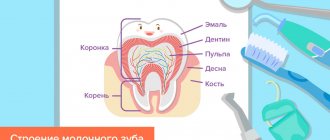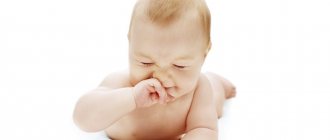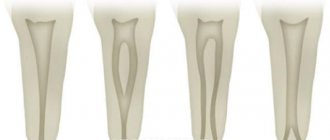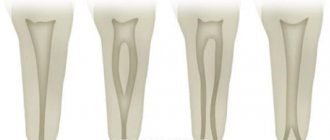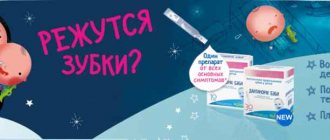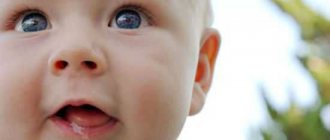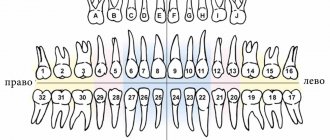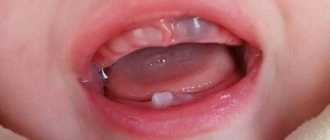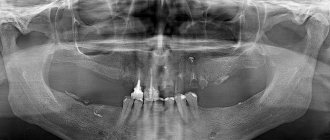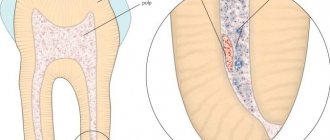Even if you take excellent care of your teeth and regularly visit the dentist, there is always a risk of mechanical damage to both baby and permanent teeth. This happens quite often: such injuries rank 5th among the most common diseases in the world. About a billion people have suffered dental injuries during their lives, and in the vast majority of cases the front teeth are damaged, which affects the aesthetics of the smile. But in such emergency situations, patients do not always know what to do and how to behave, whereas the faster and more correct first aid is provided, the higher the chances of saving the tooth. Olga Sergeevna Tishkina, a dentist-therapist and esthetician at the Iceberg Clinic in Moscow, talks about the types and classification of dental injuries, what to do in such a situation and how the dentist can help you.
Diagnosis of tooth trauma
In case of tooth injuries, timely assistance is very important to minimize the consequences of damage. It cannot be put off until later (after a day, a week, etc.) - it is important to provide yourself or your child with first aid correctly and contact a dentist as soon as possible. But first you need to figure out what damage is considered a tooth injury.
Mechanical tooth trauma is damage resulting from falls, impacts, accidents and other external influences. They violate the shape of the tooth and the integrity of dental tissues. Mechanical injuries of various types are divided into acute and chronic dental injuries. The first type includes damage to teeth as a result of a single and strong action (falling from a bicycle, swing, scooter, biting too hard food or a toy, a blow to the teeth due to an accident, etc.).
Chronic injuries are associated with bad habits (for example, chewing pencils, pens, seeds) or with a violation of the closure of teeth, due to which the dental tissues are gradually injured.
➢ The peak of injuries to permanent teeth occurs at primary school age - 8-10 years, and for milk teeth - at 2-3 years.
➢ Injury to permanent teeth is less common among professional athletes, since they wear special protection - helmets, mouth guards, and shields.
➢ Most often, injuries occur for everyday reasons: during breaks at school, during active games, at home, on the street, etc.
➢ Trauma to the front teeth, especially the incisors, is the most common occurrence (about 80% of cases).
➢ The risk of damaging teeth is 3 times higher in people with a distal bite, in which the front teeth protrude forward and the lower jaw is in a posterior position.
Classification of dental injuries
The ICD-10 (International Classification of Diseases) classification of dental injuries includes more than ten types of dental injuries. To summarize, all mechanical damage is divided into:
- for injuries to the tooth itself or fractures;
- tooth displacement or dislocation;
- damage to soft tissues and jaws.
It is also worth noting a bruise - minimal damage to a tooth when it looks intact and visually no damage is visible - no chips, no cracks. But due to the impact, the blood supply to the tooth pulp may be disrupted, and subsequently the tooth may darken. Tooth bruises belong to the first class of injuries according to ICD-10. It hurts to touch, bite and chew food.
First aid for a bruise is to give pain relief if necessary, and consult a dentist as soon as possible.
Treatment for crown fracture
If the root is damaged or the tooth is deeply embedded in the gum, it must be removed. Sometimes when there is a fracture, it flies out on its own and leaves an oozing hole. After the bleeding stops, you should not rinse your mouth for 24 hours so as not to wash out the blood clot. But at home, parents should carry out certain treatment:
- Treat the gums with an antiseptic solution of soda, use the drug Chlorhexidine, Miramistin or Stomatofit for disinfection. Using a cotton swab, wipe the gums and inner surface of the cheeks, trying not to touch the socket.
- Every other day, an application of Solcoseryl cream is applied to the wound, which accelerates its healing and regeneration of mucosal tissue. For children over 5 years old, Cholisal and Levomekolev ointment with an anti-inflammatory effect can be used.
- Hematoma and swelling go away faster when applying a product with heparin or troxerutin (Troxevasin gel, Trombex).
In some situations, dentists recommend installing a temporary implant that will prevent thinning of the dentition. This will help prevent curvature and tilting of adjacent molars, and will eliminate the defect and problems with the pronunciation of hissing sounds.
Dental injuries in the form of fractures
Chips of enamel, fractures of the coronal part with damage to the pulp, fractures of the roots - all these injuries fall into the category of “tooth fracture”. There are 3 options for fractures of primary teeth:
- if the baby tooth is slightly injured, then the doctor usually monitors its condition;
- In case of significant damage, the baby tooth is removed in order to preserve the permanent tooth germ, since the injured baby tooth becomes a source of infection. This often happens with longitudinal fractures - when the tooth cracks in half lengthwise, and it is no longer possible to save it;
- in other cases, the tooth can be saved through restoration and canal treatment. In young children, treatment is often carried out during sleep.
First aid for a tooth fracture: It is very important to collect all the tooth fragments and put them in water or milk. If you collect all the parts of the tooth and quickly, within half an hour, get to the dentist, the tooth can be restored and it will be successfully fixed in the socket. If it was not possible to collect the tooth particles, then treatment of the tooth injury is carried out:
- In case of minor damage to the enamel (chips, cracks), tooth polishing is not performed - the dentist restores the tooth by installing a filling.
- If there is severe damage to the crown of the tooth, endodontic treatment may be required to preserve the pulp and then the installation of an inlay and/or crown.
- If the root is fractured, the tooth is rigidly splinted for 3-4 months, and the dentist monitors the condition of the pulp. Sometimes it is necessary to treat the canal of a coronal fragment, but there is no need to connect the fragments with pins. The tooth can almost always be saved, since this is a sterile injury, and the treatment prognosis is favorable, and therefore it is not necessary to remove teeth with a broken root.
The peculiarities of dental prosthetics in children are the impossibility of using implants, so a lost tooth is replaced with a removable plate, an artificial tooth is fixed with fiberglass to adjacent teeth, or orthodontic mini-screws are used to fix the prosthesis with a temporary screw. Tooth replantation is also used - transplantation of a lateral tooth in place of a missing one.
First aid in case of impact
Further consequences often depend on the speed of reaction and correct actions of adults. If a child has bruised a front tooth, you need to calm the baby down and ask him to show the wound. In case of severe bleeding, apply a cold object to the injured area: a piece of ice wrapped in a cloth, a handkerchief soaked in water. Hydrogen peroxide helps stop bleeding: soak a cotton swab in it and apply it for a minute. The cotton wool is changed periodically, trying to remove dirt and dust particles from the wound.
If a tooth has shifted inward or to the side, it is strictly forbidden to touch it and try to give it the correct position. When a fracture occurs, a vessel may rupture and the situation will be complicated by severe swelling and internal hematoma. Sometimes the crown falls out on its own. In this case, it is important to make sure that a blood clot remains in the socket. It will reliably protect the wound from infection and bacteria. In the future, you should visit the dentist. He must make sure that root fragments do not get stuck in the periodontium and do not go inside.
Dislocation
When a tooth is dislocated, sometimes it is impossible to completely close the mouth, or the tooth becomes loose and changes its position relative to other teeth. How to distinguish a tooth dislocation from a fracture? If the appearance of the teeth has changed - they have become shorter, tilted, etc., and the gums are bleeding, then you are dealing with a dislocation.
First aid for dislocation is the most correct tactic: do not let the child close the teeth, do not touch them and do not try to set them back on their own, because such displacements can be accompanied by injuries to the bone and gums. It is best to immediately contact a dentist, who will take a three-dimensional photograph, return the teeth to the correct position, and apply dental plaster for several weeks. The sooner you do this, the better.
Experts distinguish between many types of dislocations, including partial, complete and impacted.
Partial dislocation
With such damage, the tooth partially falls out of the socket. Often the alveolar wall is damaged, there is a tear in the periodontal fibers, and therefore the tooth becomes loose, bleeding occurs, and severe pain occurs when pressing and chewing. However, the anatomical structure is not disturbed, so the main task is to fix the tooth in the correct position in the socket until healing. In case of partial dislocation, this is achieved using special caps or splinting. The key point is to get the victim to the dentist as quickly as possible.
Complete dislocation
The tooth completely falls out of the socket, which is accompanied by heavy bleeding. When a baby tooth falls out, it is not reinserted, since placing the baby tooth in the socket can damage the germ of the permanent one. But if a permanent tooth falls out, then the necessary first aid is to find the tooth, wash it with water, but do not rub it or treat it with alcohol, since there are still living cells on it. Then the tooth needs to be inserted into the socket or, if this is not possible, put the tooth in milk and call the clinic to get instructions on how to do this.
If the tooth is placed back into the socket within 5 minutes, the prognosis is favorable - the tooth will successfully take root. Over a period of 5 to 10 minutes, the chances decrease as the number of living cells decreases. If the tooth has been exposed to air for a long time and has dried out, it will not take root for long, just a few years.
In any case, you need to get to the clinic as soon as possible - preferably within half an hour. If this is not possible, then contacting a dentist is still necessary. It is necessary to carry out root canal treatment, since when a tooth is severely displaced or falls out completely, the blood supply to it stops.
Impacted dislocation
Milk teeth are very often driven deep into the socket, since when they fall, the impact force is directed from bottom to top. This is very dangerous for the buds of permanent teeth, which are located behind the roots of baby teeth. Due to such trauma, various disturbances in the formation of the enamel of permanent teeth can occur, which manifest themselves in the form of yellow and white spots or defects in the shape of the tooth. It is necessary to take a targeted picture on a visiograph to assess the risks for permanent teeth. If a baby tooth is impacted too deeply, it is removed to reduce the risk of developing defects in permanent teeth. Sometimes tooth reduction is performed, in which the dentist very carefully returns the impacted tooth to its correct position and then splints it.
Tooth injuries are often accompanied by damage to soft tissues - cheeks, gums, lips. In this case, the dentist prescribes mild antiseptics - most often chlorhexidine preparations, as well as a gentle diet without harsh foods.
Make an appointment
right now!
Tishkina Olga Sergeevna
Therapist
Causes of damage to baby teeth
Various dental injuries and fractures occur in 25% of all children. The first wave of visits to the doctor occurs at the age of 1–3 years, when they learn to walk and run, and lose their balance while playing. The second peak is the first grades of school. They begin to attend sports sections, clubs, and try to prove their independence in conflicts with classmates.
All oral injuries can be divided into 2 types:
- Only the gums are damaged, a painful scratch, hematoma or more serious wounds are observed. In this case, the molars are not affected, and the problem goes away without consequences.
- A bruise of a baby tooth is diagnosed, in which the crown moves to the side relative to its place. It may lean forward or backward, break apart, or become deformed.
The structure of the first teeth is almost identical to the molars. Many adults do not even realize that milk crowns have a short root, through which they receive calcium and trace elements from the periodontium. The pulp and a small network of nerve plexuses are responsible for sensitivity and health. An impact can result in fracture and damage to this fragile system, so you should visit a doctor within the first 24 hours after receiving the injury.
Where to go with a dental injury
But if you have already provided first aid to a child or adult for a tooth injury, then why also contact a dentist? The fact is that there are damages that cannot be seen with the naked eye - for example, a fracture of the tooth root inside the bone, fractures of the jaw bones and the walls of the tooth socket. Even after successfully placing the tooth back into the socket, splinting is necessary - this is the temporary stabilization of the tooth using a wire that is attached to adjacent teeth. In some cases, it is necessary to suture the edges of the wound or prescribe antibiotics.
If you ignore the problem and do not consult a doctor on time (or do not visit the clinic at all), complications will arise. The tooth may darken, become mobile, and the most common complication after a tooth injury is pulp necrosis, in which the neurovascular bundle inside the tooth dies. The dentist uses special tests to determine the vitality and condition of the pulp. Leaving dead tissue inside a tooth can lead to tooth root resorption as the body begins to perceive it as a foreign body due to infection. This leads to tooth loss in a fairly short time. This is why it is very important to have your teeth examined by specialists after an injury.
The Iceberg Dental Traumatology Center has a free hotline where doctors and patients can obtain information on the treatment of dental injuries.
Symptoms of a tooth bruise
Immediately after an injury, an appointment with pediatric dentistry is required. Often parents bring their children after a week or a week and a half. This makes examination and treatment of lesions difficult. In the first hours after damage to the masticatory organ:
- Children feel pain.
- Pain increases when biting on a pathological unit.
- The gums swell, redden, and become dense.
- If, as a result of a bruise, a vascular bundle ruptures, blood appears, and pulpal hemorrhage may develop.
- The baby's condition worsens, he becomes restless and whiny.
- The temperature may rise. The child loses his appetite.
Only a doctor can help in such a situation. If a child’s baby tooth darkens after an impact, the blood vessels and pulp tissues could be damaged. In most cases, such processes are reversible. You should take your child to the doctor if there are signs of a bruise. Without treatment, the structure of the abnormal units will suffer, which will negatively impact dental health. The symptoms of severe damage are easy to recognize. In addition to painful sensations, pinkish enamel is clearly visible due to rupture of blood vessels. Brown spots appear after trauma to the periodontal tissues that hold the unit.
